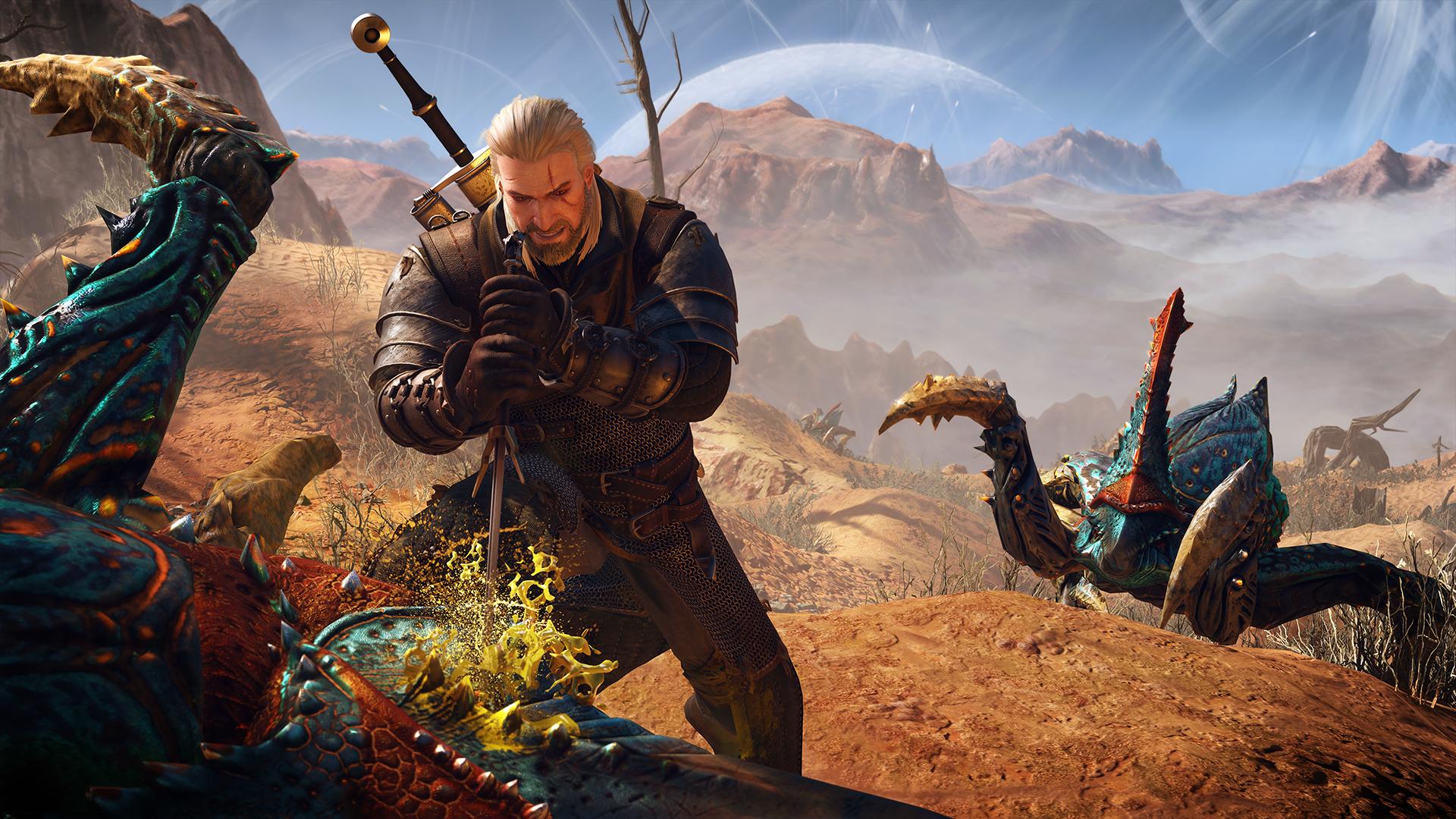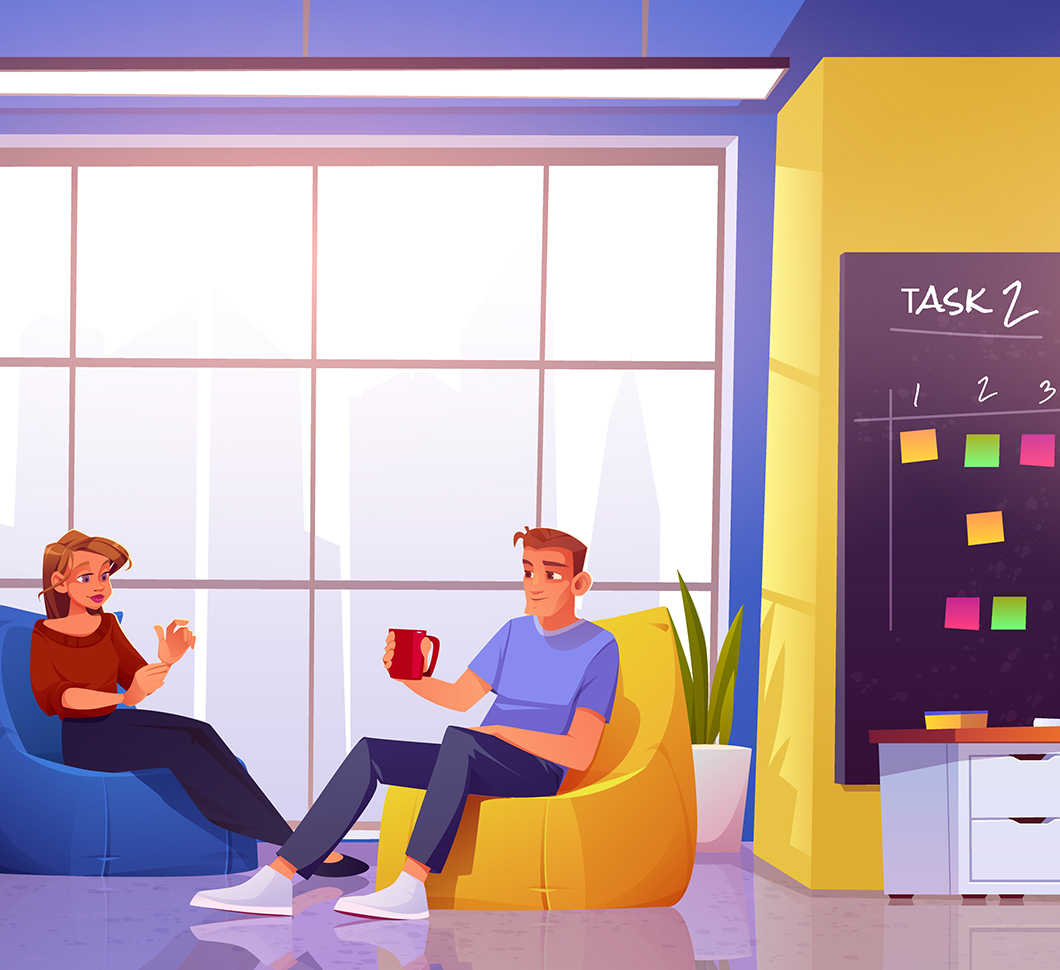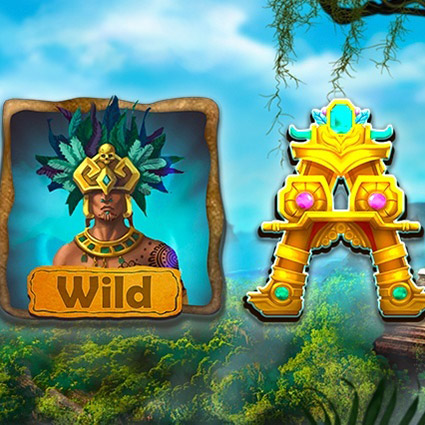Creating a single-player video game requires more than just engaging gameplay and compelling graphics. A well-developed game backend is essential for a seamless experience. A custom game development company can provide the infrastructure necessary to support various functionalities such as data storage, user authentication, and game analytics.
A robust backend ensures that game updates are efficiently managed, user data is securely stored, and player progress is consistently tracked. It also enables real-time feedback and analytics, allowing developers to fine-tune gameplay and improve user retention.
Leveraging the expertise of a custom game development company helps build a backend tailored to the specific needs of the game, enhancing overall performance and player satisfaction. Implementing a solid game backend is a critical step in the development process, ensuring your single-player video game stands out in a competitive market.
Overview of Single-Player Games

Single-player games have evolved significantly. They remain popular due to immersive stories and engaging gameplay. The market demand for high-quality single-player experiences continues to grow. Players seek games with rich narratives and compelling mechanics, driving developers to innovate and enhance their offerings to meet these expectations.
Evolution and Current Trends
Single-player games have undergone significant changes over the years. Early titles focused on simple mechanics and graphics. Modern games now offer complex narratives, advanced graphics, and expansive worlds. Developers have embraced various video game art styles, from pixel art to hyper-realistic graphics. This diversity appeals to different audiences. Innovations in AI and storytelling techniques have enhanced gameplay, creating more immersive experiences.
The rise of indie developers has introduced unique and creative concepts, pushing the boundaries of traditional game design. Moreover, technological advancements like VR and AR have opened new possibilities for single-player experiences, offering players new ways to engage with their favorite games. The industry continues to evolve, driven by player demand and technological progress, ensuring that single-player games remain a gaming staple.
Popularity and Market Demand
Single-player games continue to enjoy high demand. Players appreciate the ability to immerse themselves in rich, narrative-driven experiences without the need for online interaction. Titles like The Witcher 3 and Red Dead Redemption 2 have set high standards, showcasing the potential of single-player games. The market consistently shows strong sales figures for well-crafted single-player titles, indicating a robust appetite for these experiences.
Game developers respond to this demand by investing in compelling storylines and high-quality graphics. The growing interest in diverse video game art styles also contributes to the popularity, allowing games to stand out visually and attract different demographics. As long as players seek deep, engaging solo experiences, the market for single-player games will remain strong.
Introducing Back-End Infrastructure in Gaming
A robust back-end infrastructure is crucial for modern gaming. It supports data management, user authentication, and real-time analytics. Efficient back-end systems enhance game performance and user experience, providing a solid foundation for developers to build upon.
Does My Single-Player Game Have to be Online?
Not all single-player games require an online connection, but having one has significant benefits. An online backend enables features like cloud saves, ensuring players can access their progress across multiple devices. It also facilitates regular updates, adding new content and fixing bugs seamlessly. Online connectivity allows for real-time analytics, helping developers understand player behavior and improve game design.
Additionally, online backends can enhance procedural generation in games, allowing for more complex and varied content. Security measures, such as anti-cheat systems and data protection, are also more effective with an online infrastructure. While offline play remains essential for many, integrating online elements can significantly enhance a single-player game's overall experience and longevity.
Enhancing User Experience with Backend
A robust backend significantly improves the gaming experience. It enables seamless updates, enhances security, and ensures efficient data management. Players benefit from consistent performance, quick bug fixes, and secure transactions, making their overall experience smoother and more enjoyable.
Key Benefits of Backend in Any Game
A well-implemented backend offers numerous advantages for any game. Cloud saves ensure players can access their progress across multiple devices, enhancing convenience. Real-time analytics provide developers with valuable insights into player behavior, enabling them to make data-driven improvements. Regular updates and patches can be deployed smoothly, keeping the game fresh and fixing issues promptly. Enhanced security measures, such as anti-cheat systems and encrypted data storage, protect player information and maintain a fair gaming environment.
A robust backend also supports multiplayer elements, even in single-player games, by enabling features like leaderboards and in-game events. Additionally, it facilitates procedural generation in games, allowing for more complex and dynamic content. This infrastructure ensures a smooth, engaging experience for players and provides developers with the tools to maintain and enhance their games effectively.
Thinking about making a single-player game? Let’s build a backend for it!
Data Collection and Analytics in Game Backend
A robust backend is crucial for efficient data collection and analytics. It enables seamless tracking, storage, and analysis of player behavior, enhancing game performance and ensuring player satisfaction through data-driven improvements.
How Back-End Systems Ensure Data Collection on User Behavior
Back-end systems are integral to collecting comprehensive data on user behavior. They monitor metrics such as playtime, in-game purchases, and user preferences. Secure databases store this information, ensuring compliance with privacy regulations. Automated tools then categorize and analyze the data, providing actionable insights for developers.
Key benefits of back-end data collection include:
- Enhanced gameplay. Identifies popular mechanics and areas needing improvement.
- Personalized experiences. Adapts content based on player preferences.
- Resource allocation. Optimizes server and network resources.
- Cheat detection. Monitors for unusual patterns indicating cheating.
Developers utilize this data to refine game mechanics and enhance user engagement. Understanding player behavior allows for adjustments that align with audience needs. Effective data collection ensures games remain enjoyable and engaging. Additionally, back-end systems support procedural generation in games, offering dynamic and varied content.
A detailed back-end infrastructure enables real-time tracking of player actions, providing insights into gameplay patterns. This helps identify bottlenecks and areas where players may face challenges, allowing for timely adjustments. By leveraging data collection, developers can create a more immersive and responsive gaming experience.
Using Analytics to Improve Game Design and User Retention
Analytics derived from back-end data are crucial for refining game design and boosting user retention. Detailed reports and dashboards offer a clear picture of player interactions, helping developers pinpoint pain points and areas where players lose interest.
Key areas where analytics improve game design include:
- Level difficulty. Adjusts based on player success rates.
- Content updates. Introduces new content aligned with player interests.
- Marketing strategies. Targets campaigns to the most engaged users.
- User retention. Implements features that keep players returning.
By leveraging analytics, developers can make informed decisions that enhance the overall gaming experience. Improved game design leads to higher satisfaction, encouraging players to spend more time in the game and increasing the likelihood of in-game purchases. Effective use of analytics is a powerful tool in creating successful, long-lasting games.
Analytics also help in understanding demographic trends and player preferences, enabling developers to tailor content updates and marketing efforts effectively. Continuous monitoring and analysis ensure the game evolves in line with player expectations, fostering long-term engagement and loyalty.
Strengthening Game Security with Backend
A robust backend is essential for enhancing game security. It provides tools to prevent cheating and hacking while ensuring data privacy and regulatory compliance. Comprehensive security measures are crucial for maintaining game integrity and player trust.
Protecting Against Cheating and Hacking
Cheating and hacking are significant threats to game integrity. A strong backend is crucial in mitigating these risks. It employs advanced detection systems that monitor player behavior for suspicious activities. For instance, automated algorithms can identify abnormal patterns, such as rapid score increases or unauthorized access attempts. Real-time monitoring allows immediate responses to threats, such as banning cheaters or alerting administrators.
Key measures include:
- Intrusion detection systems. Monitor network traffic for signs of unauthorized access.
- Encryption. Protects data transmitted between clients and servers.
- Regular updates. Patches vulnerabilities and enhances security protocols.
- Two-factor authentication. Adds an extra layer of security for user accounts.
By implementing these strategies, developers can maintain a fair and secure gaming environment. Effective back-end security ensures players enjoy a safe experience, free from the disruptions caused by cheaters and hackers. Continuous improvements and updates are necessary to stay ahead of emerging threats, maintaining the integrity of the game.
Ensuring Data Privacy and Compliance with Regulations
Data privacy and regulatory compliance are critical components of game development. A robust backend helps achieve these goals by implementing strict data management policies. Personal information collected from players must be securely stored and processed in accordance with privacy laws such as GDPR and CCPA. Encryption techniques protect data both in transit and at rest, ensuring unauthorized parties cannot access sensitive information.
Key practices include:
- Data minimization. Collect only the necessary information required for gameplay.
- Access controls. Restrict data access to authorized personnel only.
- Regular audits. Ensure compliance with evolving regulations and standards.
- Transparent policies. Clearly communicate data usage practices to players.
Compliance with regulations not only protects players but also builds trust in the gaming community. Players are more likely to engage with games that respect their privacy and handle their data responsibly. By prioritizing data privacy and regulatory compliance, developers can foster a positive relationship with their audience, enhancing the overall reputation and success of the game.
Adding Social Features to Single-Player Games
Integrating social features into single-player games enhances player engagement and extends game longevity. Features like leaderboards, achievements, and in-game events foster a sense of community and competition. Players can compare scores, complete challenges, and share progress, creating a more interactive experience.
These elements encourage players to invest more time and effort, as they strive to outperform others and achieve higher rankings. Social features also facilitate community building, where players can connect, discuss strategies, and celebrate successes. By incorporating these elements, developers can create a more engaging and immersive gaming experience that appeals to a broader audience.
Competitive Elements: Leaderboards and Achievements
Leaderboards and achievements are essential for adding competitive elements to single-player games. They give players goals to strive for and a sense of accomplishment. Leaderboards display top scores or achievements, motivating others to improve their performance to rank higher. Achievements reward players for completing specific tasks or reaching milestones, adding depth to the gameplay.
Implementing these features significantly enhances player engagement. Leaderboards can be global or localized, offering varied competitive environments. Players can see where they stand compared to others, driving them to invest more time and effort into improving their skills. Achievements can range from simple tasks, like completing a level, to complex challenges, like discovering hidden items or mastering difficult game mechanics. These elements encourage players to explore different aspects of the game, making the experience more comprehensive and rewarding.
Furthermore, leaderboards and achievements allow developers to highlight various elements of the game, including different video game art styles. Players might be motivated to unlock achievements related to exploring different game areas, appreciating the diverse art styles used. This not only enhances the visual appeal of the game but also deepens the player's connection to the game world. Properly implemented, these features significantly enhance the overall gaming experience, making it more enjoyable and rewarding for players.
Leaderboards also foster a sense of community among players, even in single-player games. They create a competitive atmosphere where players can share their accomplishments and challenge each other. Achievements provide a personal sense of progress and mastery, giving players tangible goals to work towards. This combination of personal and communal rewards makes leaderboards and achievements a powerful tool for increasing player engagement and retention. Developers who effectively integrate these features into their games can create a more immersive and engaging experience, ultimately leading to higher player satisfaction and longer game lifespans.
Community Engagement: Events and Challenges
Events and challenges are crucial for fostering community engagement within single-player games. Regular events keep the player base active and excited about the game, while challenges offer players unique goals and rewards, encouraging them to invest more time and effort into the game.
Incorporating events and challenges boosts player retention and engagement. Regularly scheduled events provide players with reasons to return to the game. Challenges offer new goals and experiences, keeping the gameplay fresh and exciting. Events themed around holidays, anniversaries, or special milestones offer limited-time rewards and unique gameplay experiences.
These features also help in building a strong community. Shared experiences from events foster a sense of belonging among players. Challenges cater to both new and experienced players, ensuring everyone has something to strive for. Daily or weekly challenges keep players engaged regularly, while special events generate excitement and anticipation.
Effective use of events and challenges also highlights the game's content and features. For example, a challenge might require players to utilize specific video game art styles, encouraging them to appreciate the game's visual diversity. Events can spotlight underused game modes or features, prompting players to explore the game more fully.
Incorporating leaderboards, achievements, events, and challenges enhances the single-player experience by adding layers of engagement and motivation. These features improve player retention and build a strong community around the game, making it more dynamic and enjoyable.
Monetization Strategies Facilitated by Game Backend
A robust game backend supports various monetization strategies, enhancing revenue potential. It enables secure in-app purchases, subscription models, and ad placements. Real-time analytics help tailor offers and ads to player preferences, increasing engagement and conversion rates. Data-driven insights allow developers to optimize pricing strategies and identify high-value players.
In addition, back-end systems support dynamic content updates and seasonal events, encouraging repeat purchases and sustained player spending. By leveraging a strong backend, developers can implement effective monetization strategies that enhance player experience while maximizing revenue opportunities.
Implementing In-App Purchases Securely
Implementing in-app purchases securely is crucial for maintaining player trust and protecting sensitive information. A robust backend ensures secure transactions and protects user data. Here are essential steps to implement in-app purchases securely:
- Secure payment gateways. Utilize reputable payment gateways that offer encryption and fraud detection to ensure transactions are safe.
- Data encryption. Encrypt all data transmitted between the app and servers to prevent unauthorized access.
- User authentication. Implement strong user authentication methods, such as two-factor authentication, to verify identities before allowing purchases.
- Regular audits. Conduct regular security audits to identify vulnerabilities and ensure compliance with security standards.
- Update protocols. Keep security protocols and software up to date to protect against new threats.
By following these steps, developers can safeguard transactions and player data. Secure in-app purchases build player confidence, encouraging them to make purchases without concerns about security. A secure system also helps in compliance with data protection regulations, further enhancing player trust.
Tailoring Offers and Ads Based on Player Data
Tailoring offers and ads based on player data increases engagement and boosts revenue. A well-designed backend collects and analyzes player behavior, enabling personalized marketing strategies. Here are key steps to tailor offers and ads effectively:
- Behavior tracking. Monitor player activities, preferences, and purchase history to gather relevant data.
- Segmentation. Segment players into groups based on their behavior and preferences for targeted marketing.
- Personalized offers. Create customized offers and ads that resonate with each player segment, increasing the likelihood of purchases.
- Dynamic updates. Regularly update offers and ads based on real-time data to keep them relevant and appealing.
- Performance analysis. Continuously analyze the performance of offers and ads to refine strategies and improve results.
Using player data to tailor offers and ads ensures that marketing efforts are relevant and effective. Personalized content appeals more to players, leading to higher engagement and conversion rates. Such an approach not only enhances the player experience but also maximizes the potential for in-game purchases and revenue growth.
Scalability and Maintenance through Back-End Support
Scalability and maintenance are crucial for the long-term success of any game. A robust backend ensures the game can handle many users without performance issues. It provides the infrastructure necessary to efficiently manage increased traffic, user data, and complex features. Additionally, back-end support simplifies deploying updates and fixing bugs, ensuring players have a smooth and enjoyable experience. This continuous support helps maintain player engagement and satisfaction, ultimately contributing to the game's longevity and success.
Handling a Growing Number of Users
As the popularity of a game increases, so does the number of users. Managing this growth effectively is crucial for maintaining a positive player experience. A strong backend is essential for handling increased traffic and ensuring that servers can manage higher loads without performance degradation. Load balancing techniques distribute user requests evenly across multiple servers, preventing any single server from becoming overwhelmed. Cloud-based solutions offer scalable resources, allowing developers to increase capacity as needed to match user demand. Efficient data management ensures that player information is stored and retrieved quickly, even as the database grows.
A robust backend also supports real-time interactions and updates, which are vital for games with live events or multiplayer components. Ensuring that these features run smoothly for all users, regardless of the number of simultaneous connections, is critical. Monitoring tools provide insights into server performance and user activity, helping developers identify and address potential issues before they impact players. By leveraging these technologies, developers can ensure that their game remains responsive and enjoyable, even as the user base expands.
Simplifying Updates and Bug Fixes
Regular updates and timely bug fixes are essential for maintaining a high-quality gaming experience. A well-designed backend streamlines these processes, making it easier for developers to quickly deploy new content and resolve issues. Centralized management allows for coordinated updates across all servers, ensuring that players receive new features and fixes simultaneously. Automated deployment tools reduce the risk of errors during updates, minimizing downtime and disruption for users.
Efficient back-end systems also foster trust and confidence by facilitating thorough testing before updates go live. Staging environments replicate the live environment, allowing developers to test new features and fixes under realistic conditions. This meticulous testing helps identify potential issues early, ensuring that updates are stable and reliable. Real-time monitoring and logging provide valuable feedback during and after deployment, helping developers track the performance of updates and address any emerging issues promptly, further reinforcing the system's reliability.
A robust backend supports rollback mechanisms, enabling developers to revert to previous versions quickly if an update causes unforeseen problems. This ensures that players experience minimal disruption and maintain trust in the game's stability. A robust backend allows developers to keep their game fresh, engaging, and free from technical issues, ultimately enhancing player satisfaction and retention by simplifying updating and fixing bugs.
Examples of Single-Player Games with a Robust Backend

Several single-player games have successfully integrated a robust backend, enhancing gameplay and user experience. One notable example is The Witcher 3: Wild Hunt. Its backend supports vast open-world exploration, seamless updates, and downloadable content (DLC) integration. Thanks to efficient server management and regular maintenance, players enjoy a stable experience with minimal downtime.

Another exemplary game is Red Dead Redemption 2. The backend handles extensive data processing for its intricate world, ensuring smooth performance. It supports cloud saves, allowing players to access their progress across different devices. Regular updates introduce new features and fix bugs, maintaining the game's quality over time.

Hades, developed by Supergiant Games, also showcases the benefits of a robust backend. The game uses a procedural generation system to create varied dungeon layouts, supported by a strong infrastructure that handles the complexity of real-time content creation. Players benefit from a dynamic gaming experience with consistent performance.
The crucial advantages of a robust backend in these games include:
By examining these examples, it's clear that a well-implemented backend significantly enhances the single-player gaming experience. Developers can manage large amounts of data, provide regular updates, and ensure players enjoy a consistent and engaging experience. The integration of a solid backend not only improves performance but also supports long-term player retention and satisfaction.
Challenges and Considerations in Game Back-End Implementation
Implementing a robust backend for a game presents several challenges and considerations.
One major challenge is ensuring scalability. As the player base grows, the backend must handle increased traffic and data load without compromising performance. Developers must design systems that scale efficiently, often utilizing cloud services to manage fluctuating demands.
Security is another critical consideration. Protecting player data from breaches and preventing cheating requires sophisticated encryption and intrusion detection systems. Developers must regularly update security protocols to address emerging threats and maintain player trust.
Integrating real-time analytics is also complex. Capturing and processing data on player behavior in real-time demands advanced infrastructure and significant processing power. This data is invaluable for making informed decisions on game updates and balancing but requires careful management to avoid performance issues.
Maintaining seamless updates and bug fixes poses its own set of challenges. Developers must ensure that new updates do not disrupt the player experience, requiring rigorous testing and a well-coordinated deployment process. Rollback mechanisms should be in place to quickly revert problematic updates, minimizing player frustration.
Finally, cost management is a significant consideration. Building and maintaining a robust backend involves substantial financial investment in hardware, software, and ongoing operational costs. Developers must balance the need for high performance and reliability with budget constraints, often seeking cost-effective solutions like scalable cloud services.
Addressing these challenges effectively is crucial for delivering a stable, secure, and engaging gaming experience. A well-implemented backend supports long-term success by ensuring the game can grow and adapt to player needs while maintaining high performance and security standards.
Relying on Game-Ace to Build the Backend for Your Single-Player Game
Choosing Game-Ace to build the backend for your single-player game ensures a reliable and high-performance solution. Our team specializes in creating scalable, secure, and efficient back-end systems tailored to your game's unique needs. We use advanced technologies and industry best practices to handle increasing user loads and provide seamless updates, ensuring your game runs smoothly.
Security is a top priority at Game-Ace. We implement robust encryption and intrusion detection systems to protect player data and prevent cheating. Our experience in real-time analytics allows us to optimize game performance and enhance user engagement by providing valuable insights into player behavior.
By partnering with Game-Ace, you benefit from our expertise and commitment to delivering high-quality solutions. We understand the challenges of game development and are dedicated to helping you succeed. For a reliable and effective back-end solution, contact us today and let Game-Ace elevate your game to new heights.
 Key Trends Shaping Gamification in Recruitment for 2026 and Beyond
Key Trends Shaping Gamification in Recruitment for 2026 and Beyond  How to Create Crypto Casino Games the Right Way
How to Create Crypto Casino Games the Right Way  AI Recruitment Games: From Real-Time Assessments to Better Hiring Outcomes
AI Recruitment Games: From Real-Time Assessments to Better Hiring Outcomes  Games for Business: Proven Strategies for Engagement and Growth
Games for Business: Proven Strategies for Engagement and Growth  How to Design Learning Games for Kids That Teach Real-World Skills
How to Design Learning Games for Kids That Teach Real-World Skills 


































